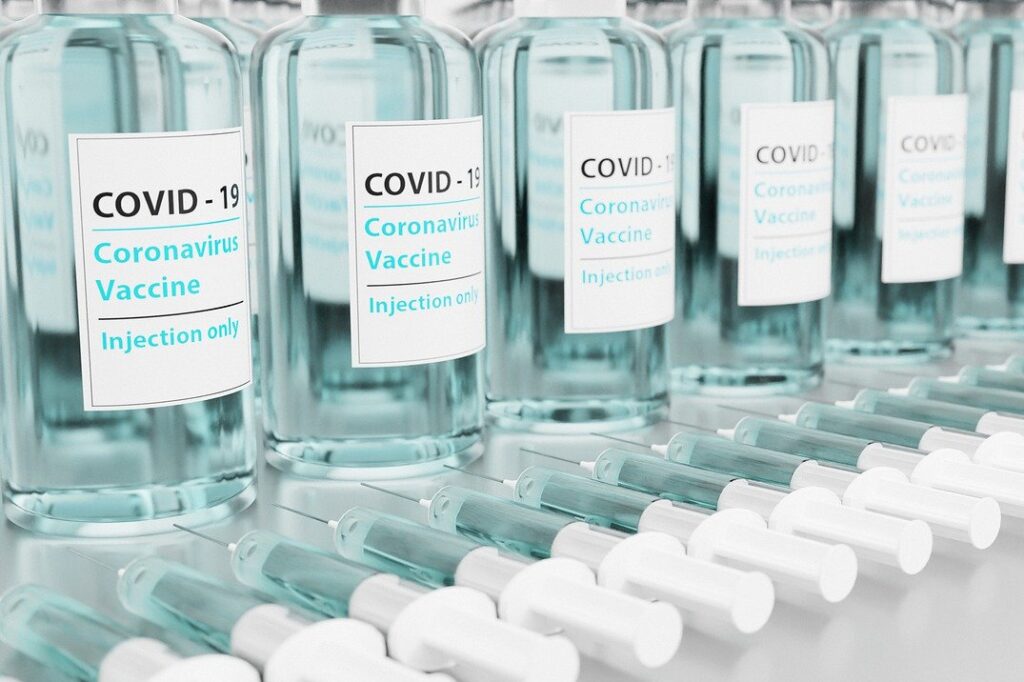 Despite vaccines’ effectiveness in preventing infectious diseases and strong public funding for childhood immunizations, vaccination rates among children living in poverty remain stubbornly lower than for children living above poverty and who are privately insured.
Despite vaccines’ effectiveness in preventing infectious diseases and strong public funding for childhood immunizations, vaccination rates among children living in poverty remain stubbornly lower than for children living above poverty and who are privately insured.
Recently, officials from several organizations, including the National Academy for State Health Policy (NASHP), AcademyHealth, and the Colorado Children’s Immunization Coalition, convened state officials and subject matter experts to identify strategies to improve immunization rates among Medicaid-enrolled children and pregnant women.
What Vaccine Benefits Do State Medicaid Programs Offer?
Recognizing their critical role in protecting public health, Medicaid covers all recommended vaccines for children and many state Medicaid programs do not charge pregnant women copayments for vaccinations in order to remove financial barriers. As a result of this publicly-funded initiative, immunization rates for Medicaid-covered children are higher than for children without health insurance, demonstrating the value Medicaid provides in overcoming socioeconomic barriers to provide essential health benefits.
| What is the Community of Practice? With support from a CDC cooperative agreement, NASHP and AcademyHealth, with support from the Colorado Children’s Immunization Coalition, are leading a Community of Practice to identify ways to improve immunization rates among Medicaid-enrolled children and pregnant women. These partners, participating states (CO, HI, KY, MT and NM), and experts will continue to convene the Community of Practice and share findings with other states seeking to increase immunization rates. |
Vaccination rates also vary by vaccination type. For example, Medicaid-covered newborns are vaccinated with the hepatitis B birth dose at higher rates than newborns covered by private insurance, demonstrating Medicaid’s effectiveness. Considering that Medicaid covers nearly half of all children in some states, this state program can build on its successes and serve as a change agent to make sure even more children receive crucial vaccinations.
Socioeconomic Disparities in Vaccination Rates Persist
Despite Medicaid’s success in boosting immunization rates, according to Centers for Disease Control and Prevention (CDC) data, socioeconomic disparities persist in vaccination rates among young children enrolled in Medicaid and pregnant women. Children living below poverty level, as well as Medicaid-enrolled and uninsured children, have significantly lower immunization rates for many vaccines compared to children living at or above poverty level and/or with private insurance. Similarly, Tdap (diphtheria, tetanus, and whooping cough) and influenza immunization rates are lower among pregnant women living below the poverty level and/or enrolled in public insurance programs.
CDC shared these findings recently when NASHP, AcademyHealth, and the Colorado Children’s Immunization Coalition gathered state officials and experts together to identify strategies to improve immunization rates among Medicaid-enrolled children and pregnant women.
Strategies to Narrow the Immunization Gap
Attendees noted that lower vaccination rates among Medicaid enrollees could result from many factors, including poor access to care or lack of provider recommendations. Meeting participants discussed several evidence-based interventions recommended by the Community Preventive Services Task Force to increase immunization rates among Medicaid beneficiaries. These include:
- Monitoring immunization status during home visits;
- Providing immunizations in school-based health clinics, Special Supplemental Nutrition Program for Women, Infants, and Children (WIC) settings, and other non-traditional venues; and
- Using standing orders for age-appropriate immunizations as defined by CDC during well-child visits.
Meeting participants also suggested leveraging relationships with managed care organizations and patient-centered medical homes, where applicable, to increase immunization rates and providing non-emergency medical transportation to help families adhere to well-child and prenatal appointments, where immunizations are commonly administered.
Meeting participants also identified use of data, primarily Immunization Information Systems (IIS), as a strategy to identify disparities and target immunization outreach. An IIS records immunization doses administered by participating providers and can provide both patient immunization histories for use by providers in a clinical setting. IIS can also collect data at the population level to guide actions to improve immunization rates.
However, attendees identified barriers to using IIS effectively at both the state and provider level, including:
- A lack of funding to support development and maintenance;
- Legal and technical barriers to data exchange;
- Data silos within and between agencies;
- Data-sharing challenges between electronic health records and other health information exchanges; and
- Onboarding and implementation hurdles.
Tools and websites are available to help states fully maximize their IIS and data-sharing capacities, and additional tools are under development.
States participating in the Community of Practice have employed successful strategies to reduce barriers to immunization among Medicaid participants. For example, Colorado has engaged in provider outreach and collaborated with WIC programs to share the immunization status of WIC clients. Montana developed performance-tracking measures for immunization rates and incorporated these into managed care organization contracts.
The Community Preventive Services Task Force also recommends the following evidence-based best practices to increase immunization rates:
- Reduce client out-of-pocket costs for vaccinations (Medicaid pays for vaccine administration, but low-income, uninsured patients must pay for administration of the free vaccines);
- Establish vaccination requirements for childcare, school, and college settings;
- Create client or family incentive rewards;
- Design client and provider reminder/recall systems;
- Encourage provider assessments and feedback;
- Generate provider reminders; and
- Create combination community- and health care system-based interventions.
As Community of Practice states identify strategies and lessons learned to improve vaccination rates among Medicaid-covered children and pregnant women, they will be shared nationally to support similar efforts in other states.
Photo Courtesy of the CDC



